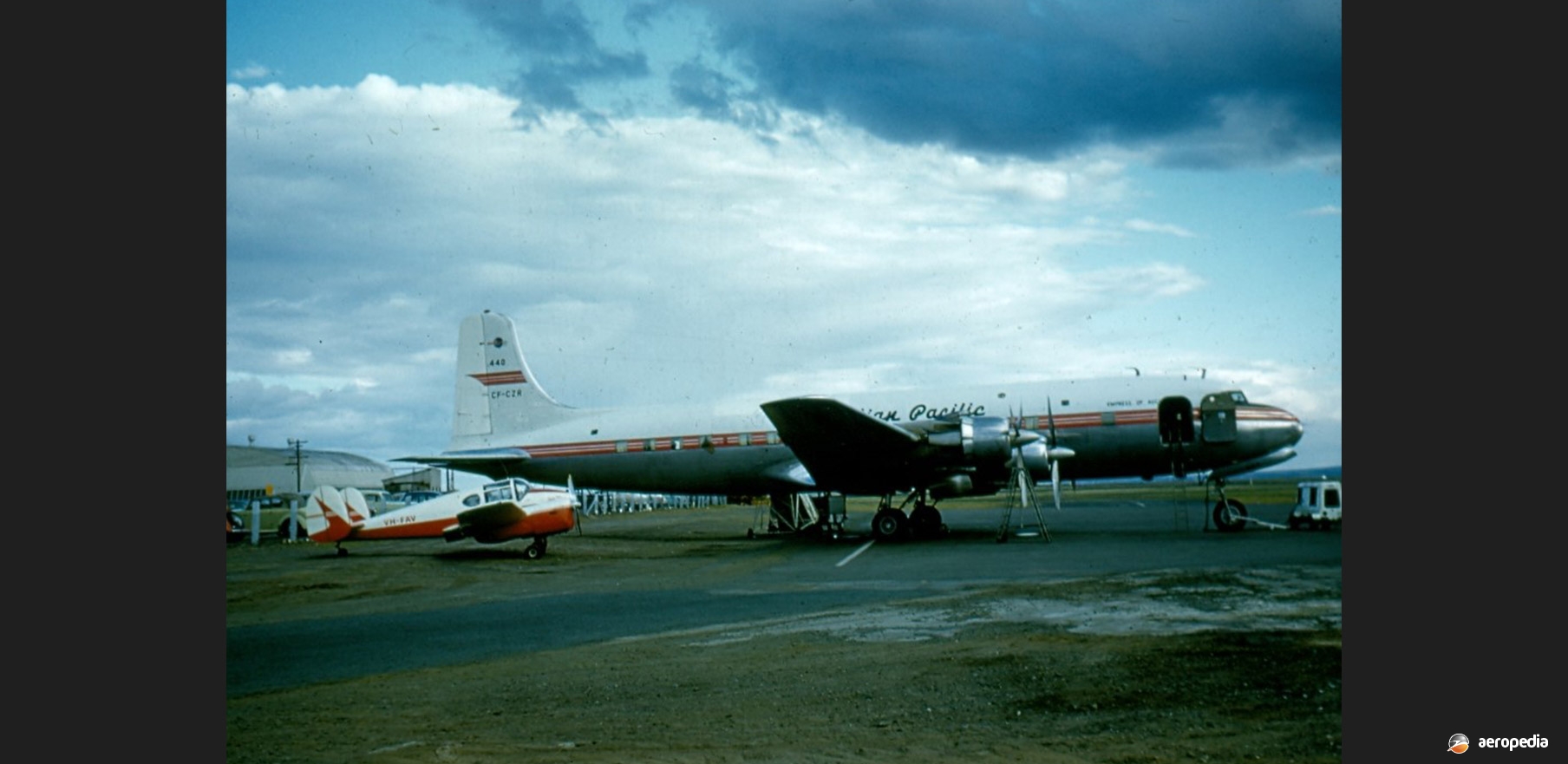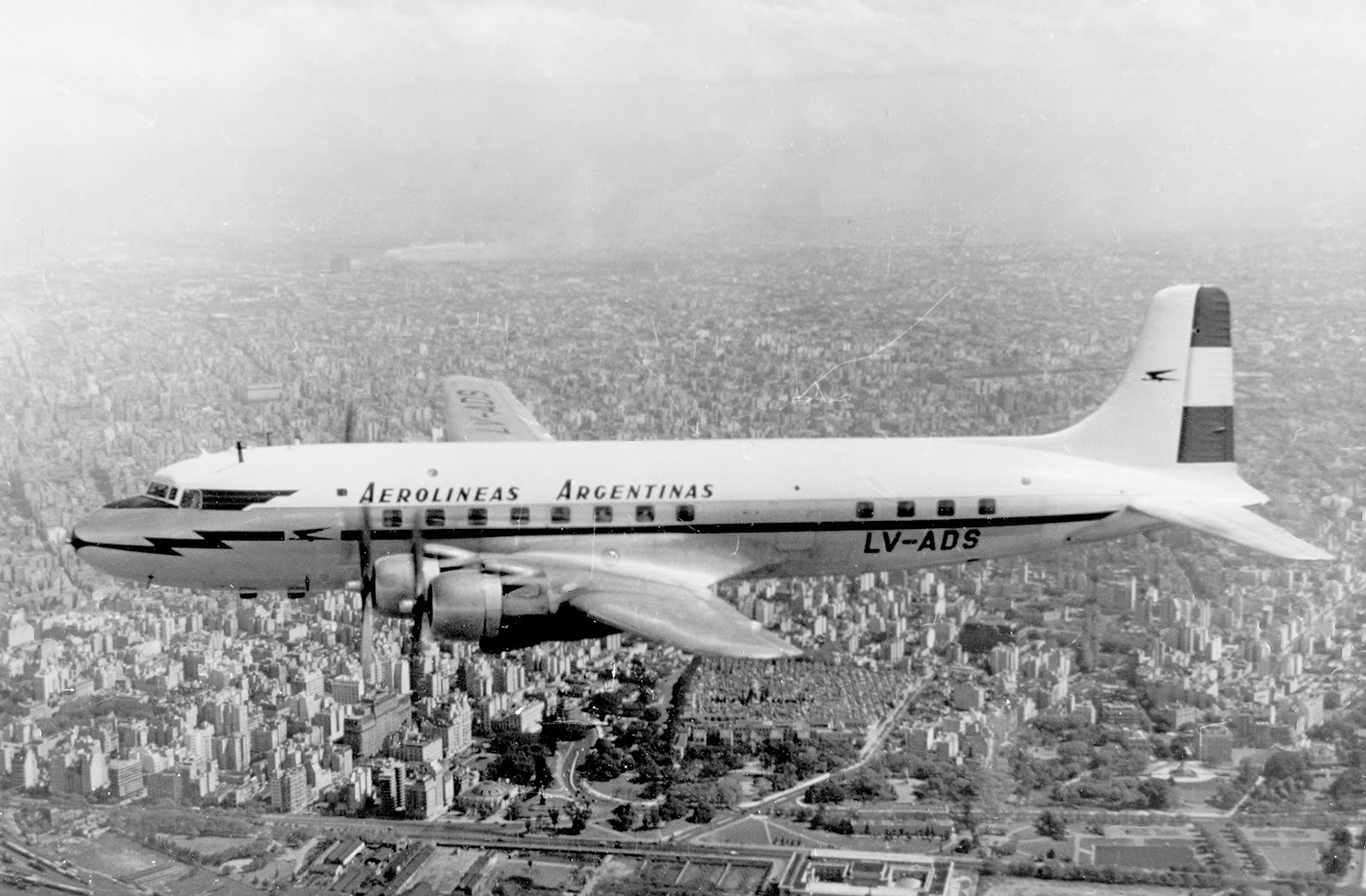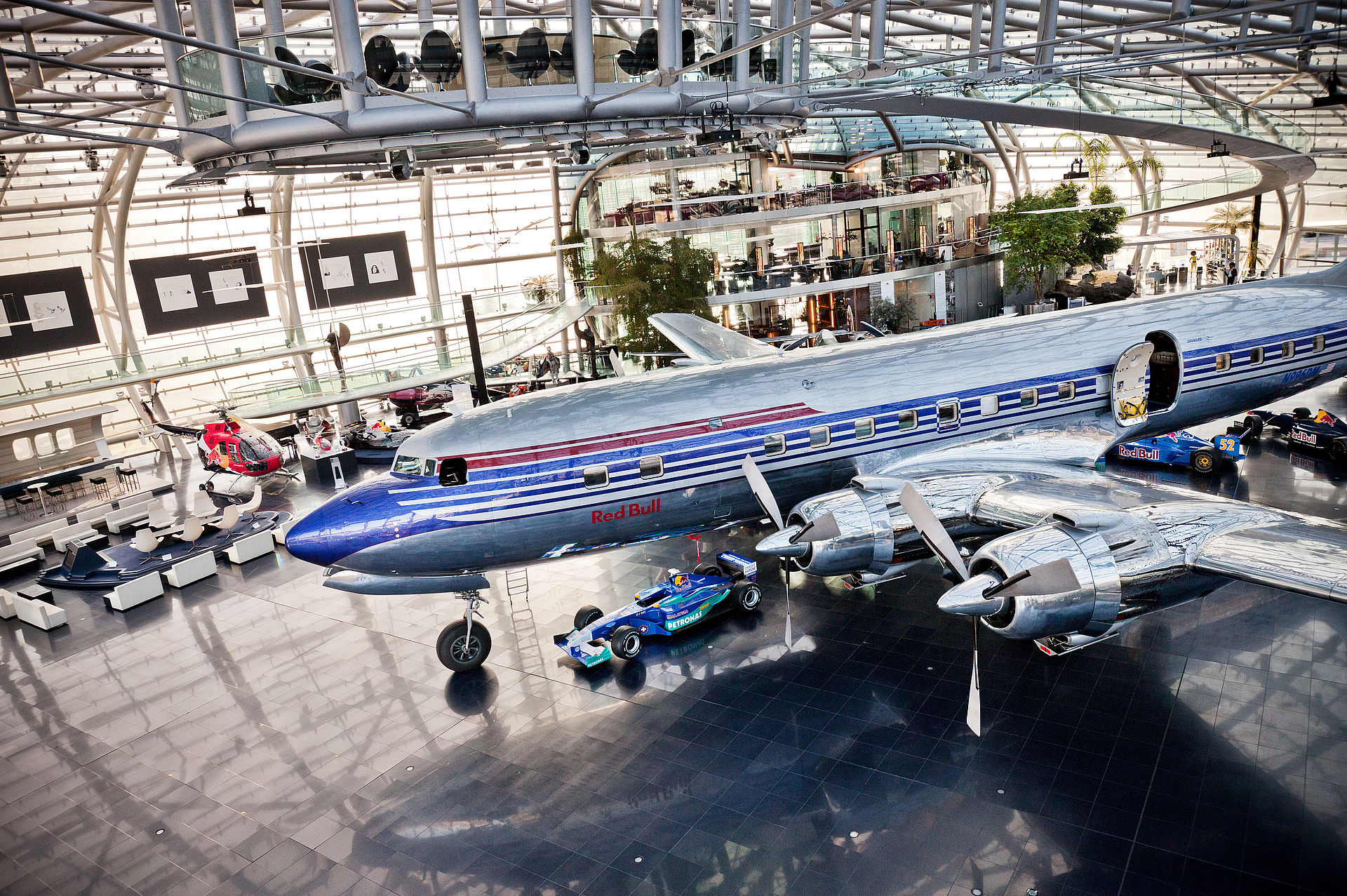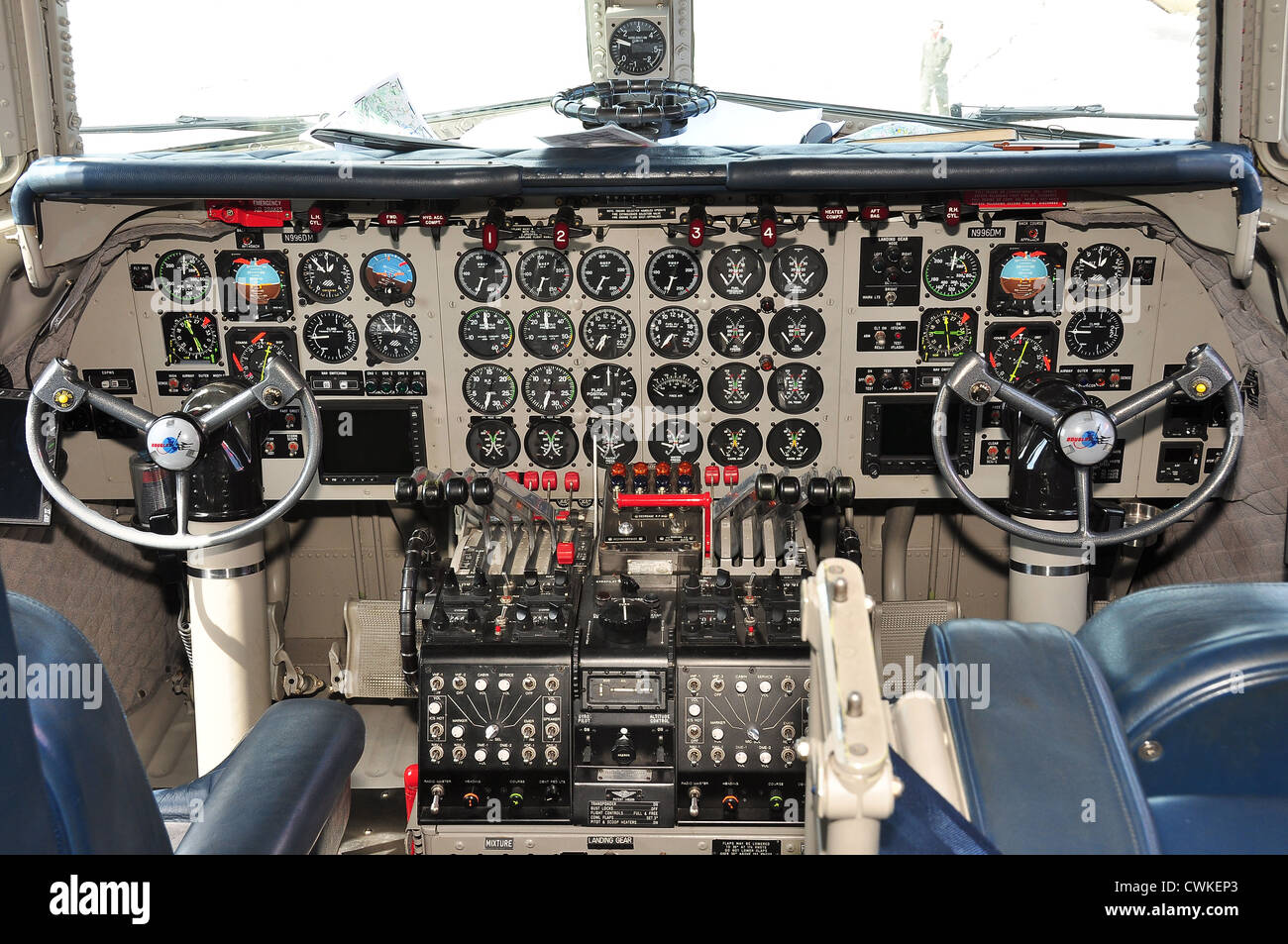Dc 6 Aircraft - After WWII, many commercial airlines began operating war surplus aircraft. These aircraft had done the yeoman's duty for the military, but most did not include the technology developed during these years. As the flying public discovered the convenience of flight, they called for faster, higher and smoother flying aircraft.
Lockheed and Boeing responded to this new demand, as did McDonnell Douglas. The larger, all-cargo DC-6A first flew Sept. 29, 1949; the larger capacity DC-6B, which could seat up 102 people, first flew Feb. 10, 1951. After the Korean War broke out in 1951, the military ordered DC-6As modified as either C-118A Liftmaster personnel carriers, as the Navy's R6D transports or as MC-118As for aeromedical evacuation.
Dc 6 Aircraft

Between 1947 and 1959, Douglas built a total of 704 DC-6s, 167 of them military versions. Douglas converted its prototype into a civil transport (redesignated YC-112A, having significant differences from subsequent production DC-6 aircraft) and delivered the first production DC-6 in March 1947. However, a series of mysterious inflight fires (including the fatal crash
The Douglas Dc- Is A Piston-Powered Airliner And Transport Aircraft Built By The Douglas Aircraft Company From To
of United Airlines Flight 608) grounded the DC-6 fleet later that year. The cause was found to be a fuel vent located adjacent to the cabin cooling turbine intake. All DC-6s in service were modified to correct the problem and the fleet was flying again after just four months on the ground.
The manufacturing company produced four versions of the DC-6: the standard DC-6 was the initial production version with two types- the DC-6-1156 was a fifty-three to sixty-eight-seater domestic version while the DC-6 -1159 was a forty-eight to sixty-four-seater trans-ocean version;
the DC-6A was a freighter version with a stretched fuselage, forward and aft cargo doors, and was initially named as Liftmaster; the DC-6B was an all-passenger version of the DC-6A lacking the cargo doors. The DC-6B-1198A was a sixty to eighty-nine-seater domestic version while the DC-6B-1225A was a forty-two to eighty-nine-seater trans-ocean version;
the DC-6C was a convertible cargo and passenger version. Our fleet comes either from the military batch or from other civil operators. As we are cargo-only operators, all of our planes now have cargo doors and are configured for that type of flying.

At one time, however, they carried passengers and freight for United, Sabena, Southwest Airlines, Western Northeast Airlines, Japan Airlines, Cathay Pacific, the U.S.A.F., the Navy, and a few other operators. Many older DC-6s were replaced in airline passenger service from the mid 1950s by the Douglas DC-7, but the simpler, more economical engines in the DC-6 has meant that the type has outlived the more sophisticated DC-7, particularly for
cargo operations. DC-6/7s surviving into the Jet Age were replaced in front line inter-continental passenger service by Boeing 707 and Douglas DC-8 aircraft. Although the DC-6 had the same wingspan as the DC-4, its engines helped it fly 90 mph (145 kph) faster than the DC-4, carry 3,000 pounds (1350 kilograms) more payload and fly 850 miles (1368 kilometers)
further. The DC-6 could maintain the cabin pressure of 5,000 feet (1524 kilometers) while flying at 20,000 feet (6096 meters). Our fleet comes either from the military batch or from other civil operators. As we are cargo-only operators, all of our planes now have cargo doors and are configured for that type of flying.
At one time, however, they carried passengers and freight for United, Sabena, Southwest Airlines, Western Northeast Airlines, Japan Airlines, Cathay Pacific, the U.S.A.F., the Navy, and a few other operators. Pan Am used a fleet of DC-6B aircraft to start trans-Atlantic tourist class flights in 1952. Several European airlines quickly followed with their own transatlantic services.
The DC-6A/B/C sub-types were capable of non-stop flights from the eastern US to Europe but normally needed to refuel in Newfoundland when westbound against the wind. The DC-6 was an expansion to the wartime C-54, which had been intended to be the civil DC-4.
The DC-4 first flew in 1942 and was followed almost immediately by enhancements that would, by the end of the war, surpass it. These included more powerful engines, cabin pressurization, reversing propellers, numerous electronic modifications, and an 81-inch stretch in fuselage for more passenger and cargo capacity.

It also received a new designation as the DC-6 and flew for the first time in 1946. The military version, similar to the DC-6A, was designated the USAF C-118 Liftmaster; the USN R6D version used the more powerful R-2800-CB-17 engines.
These were later used on the commercial DC-6B to accommodate international flights. The R6D Navy version (in the late 1950s and early 1960s) had Curtiss Electric constant-speed reversing propellers. Douglas designed four variants of the DC-6: the basic DC-6, and the longer fuselage, higher-gross-weight, longer range versions—the DC-6A with large cargo doors forward and aft of the wing on the port (left
hand side) with a cargo floor; the DC-6B, designed for passenger work, with passenger doors only and a lighter floor; and the DC-6C convertible, with the two cargo doors and removable passenger seats. The Douglas DC-6 was produced by the Douglas Aircraft Company between 1946 to 1958. It was a cargo aircraft powered by piston engines and initially planned as a military transport towards the end of the Second World War before it was redeveloped after the war to contest
in the commercial transport market with the four-engine Constellation built by Lockheed. This is another plane that is impossible to address in a brief history. Stories involving this plane are well documented in lengthy books. One thing to note, though, is that while other competitive planes were being built during her years, they are now gone and she is not.
American Airlines and United Airlines ordered the commercial DC-6 in 1946, and Pan American Airways used the DC-6 to start tourist-class service across the North Atlantic. The 29th DC-6 was ordered by the U.S. Air Force, adapted as the presidential aircraft and designated the VC-118.
It was delivered on July 1, 1947, and named The Independence after President Harry Truman's hometown, Independence, Mo. The USAF and USN renewed their interest in the DC-6 during the Korean War, and ordered a total of 167 C-118/R6D aircraft, some of which later found their way into civilian service.

Harry Truman's first presidential aircraft was an Air Force short fuselage DC-6 which was designated VC-118, and named "The Independence". It is preserved in the National Museum of the United States Air Force in Dayton, Ohio.
Even this plane did not satisfy demands on the industry, and it received another stretch, even more powerful engines, and a cargo door for some of the production. The new version was called the DC-6A (cargo and passengers) and the DC-6B (passengers only).
This version became one of the primary aircraft used by commercial airlines until the advent of the jet. There is not a major airline that comes to mind that did not operate (at some point) at least one version of the DC-6, DC-6A or DC-6B.
As a historical note, at the same time the military ordered a few hundred of these aircraft to be flown as the C-118 for the Air Force and the R6D for the Navy. They last flew for the military in the mid-80s, and some of those planes are still flying today as cargo planes or fire bombers.
In April 1949 United, American, Delta, National and Braniff were flying DC-6s in the United States. United flew them to Hawaii, Braniff flew them to Rio de Janeiro, and Panagra flew Miami-Buenos Aires; KLM, SAS and Sabena flew DC-6s across the Atlantic.
BCPA DC-6s flew Sydney to Vancouver and Philippine flew Manila to London and Manila to San Francisco. Originally intended as a military transport near the end of World War II, it was reworked after the war to compete with the Lockheed Constellation in the long-range commercial transport market.

More than 700 were built and many still fly today in cargo, military and wildfire control roles. The DC-6 was an expansion to the wartime C-54, which had been intended to be the civil DC-4. The DC-4 first flew in 1942 and was followed almost immediately by enhancements that would, by the end of the war, surpass it.
These included more powerful engines, cabin pressurization, reversing propellers, numerous electronic modifications, and an 81-inch stretch in fuselage for more passenger and cargo capacity. It also received a new designation as the DC-6 and flew for the first time in 1946.
The United States Army Air Forces commissioned the DC-6 project as the XC-112 in 1944. The Army Air Forces wanted an expanded, pressurized version of the popular DC-4 based C-54 Skymaster transport with improved engines. By the time the renamed XC-112A flew, the war was over and the USAAF had rescinded its requirement.
Even this plane did not satisfy demands on the industry, and it received another stretch, even more powerful engines, and a cargo door for some of the production. The new version was called the DC-6A (cargo and passengers) and the DC-6B (passengers only).
This version became one of the primary aircraft used by commercial airlines until the advent of the jet. There is not a major airline that comes to mind that did not operate (at some point) at least one version of the DC-6, DC-6A or DC-6B.
As a historical note, at the same time the military ordered a few hundred of these aircraft to be flown as the C-118 for the Air Force and the R6D for the Navy. They last flew for the military in the mid-80s, and some of those planes are still flying today as cargo planes or fire bombers.

This is another plane that is impossible to address in a brief history. Stories involving this plane are well documented in lengthy books. One thing to note, though, is that while other competitive planes were being built during her years, they are now gone and she is not.
The aircraft manufacturer Douglas Aircraft Company converted the design into a civilian aircraft which was around 2 meters longer compared to the previous DC-4. On June 29, 1946, the DC-6 civilian transport took its first flight, being kept by the company for testing.
On November 24, 1946, the aircraft was delivered to its first airline customers, American Airlines and United Airlines. In 1947, the DC-6 was grounded due to a series of inflight fires that occurred. In 1949, several airlines in the United States operated the aircraft including United Airlines, American Airlines, National Airlines, Delta Airlines, and Braniff International Airways.
In 1952, the DC-6B version was used by Pan American Airways for their transatlantic tourist-class routes. After WWII, many commercial airlines began operating war surplus aircraft. These aircraft had done the yeoman's duty for the military, but most did not include the technology developed during these years.
As the flying public discovered the convenience of flight, they called for faster, higher and smoother flying aircraft. Lockheed and Boeing responded to this new demand, as did McDonnell Douglas. The DC-6 was known as the C-118 Liftmaster in United States Air Force service and as the R6D in United States Navy service prior to 1962 after which all U.S.
Navy variants were also designated as the C-118. In 1944, the DC-6 project was designated by the United States Army Air Force as the XC-112. The Army had a requirement for a stretched and pressurized type of the C-54 Skymaster powered by more reliable engines.
On February 15, 1946, the XC-112A prototype conducted its maiden flight, however, the Second World War had ended which led to the cancellation of the Army Air Force's requirements, and later converted the aircraft to YC-112A which were sold in 1955.
douglas dc 6 engine, douglas dc 6 aircraft, dc 6 cargo plane, dc 6 aircraft for sale, dc 6 specs, dc 6b, dc 7 aircraft, douglas dc 6